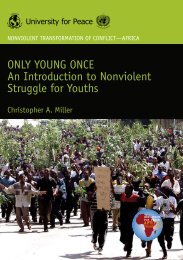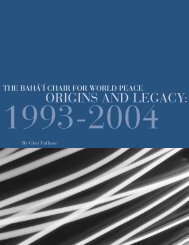who medicines strategy - libdoc.who.int - World Health Organization
who medicines strategy - libdoc.who.int - World Health Organization
who medicines strategy - libdoc.who.int - World Health Organization
You also want an ePaper? Increase the reach of your titles
YUMPU automatically turns print PDFs into web optimized ePapers that Google loves.
COMPONENTS OF THE STRATEGY | 73MEDICINE SUPPLYSTRATEGIESCentral medical storesCentralized, fully public management,warehousing, and delivery system(Semi-)autonomous supply agencyCentralized, (semi-)privatemanagement and warehousing systemDirect delivery systemCentralized decision-making butdecentralized, private direct deliverysystemPrime distributorCentralized decision-making butdecentralized, private warehousingand delivery systemFully private supplyDecentralized decision-making, fullyprivate <strong>who</strong>lesalers and pharmaciessystem.Challenges remainingTo date there has been no systematic evaluationof the advantages and limitations of the differentsupply strategies in different (particularly lowincome)settings. Thus, empirical evidence onwhich to base policy-making is limited. Thechallenge for governments is to establish themost appropriate <strong>medicines</strong> supply <strong>strategy</strong>, andto identify the extent to which the private sector,including NGOs, can be a partner in supply anddistribution systems.Meeting the challenges 2004-2007Over the next four years WHO will:> support countries in their efforts to <strong>int</strong>egrateinnovative public-private approaches throughan efficient mix of public, private, and NGOsectors in order to ensure the continuousavailability and delivery of <strong>medicines</strong> ofassured quality to all levels of the health caresystem.> carry out a multi-country study in Africa toevaluate existing public sector supply systems,including development of a comprehensiveassessment tool to enable Member States toassess their own systems.> explore with stakeholders the options fordrawing on the experiences of the NGOsector, including faith-based organizations(see also EO 4.5) to help countries formulatea feasible national <strong>medicines</strong> supply systembased on an efficient public-private mix.OUTCOME INDICATORS1999 2003 2007No. of countries with public sector procurement limited tonational essential <strong>medicines</strong> list#REPORTING % TARGET#REPORTING % TARGET71/133 53% 60% 84/127 66% 74%











